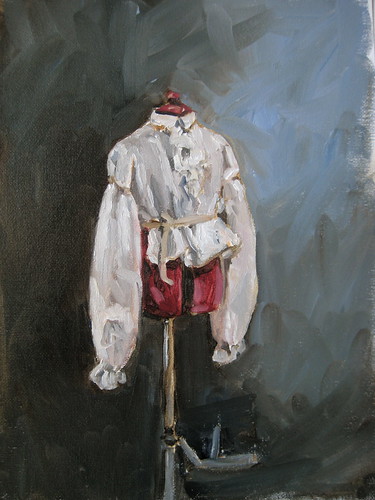So. Right. Miniatures.
The research was easier than I thought it would be; mainly thanks to my access to the Rockefeller Library here at CW, which contains nearly every book published that pertains in any useful way to the eighteenth century. The technical process on the other hand... well, that's a whole other kettle of fish.
I recently found a link to a vendor than sells all sort of materials for miniature painting, including several ivory substitutes. While I fully intend to order and try a variety of these, I wanted to get painting (and practicing) at once and decided to experiment with polymer clay.
I rolled out the clay as smoothly as possible, and trimmed it to match the little frame that I have. Since I wasn't sure which color would simulate ivory the most after baking, I made three different samples in: Ivory (natch), Winter Cream, and Translucent. Oddly enough, Translucent came out a sort of clear, fleshy tone... way too pinky to be used for this sort of thing. Winter Cream was a good color, but a bit too chalky in appearance. Happily, the Ivory actually
did look the most like ivory, and I set out to paint.
I started on a little shmushed piece that I'd baked as well, just to get a feel for the watercolor on this sort of surface. Watercolor is persnickety at the best of times, but when you are applying it to a nearly totally non-absorbent surface it turns somewhat evil. The most terrifying part which I found, is that even when the paint was dry, if you dripped water on it or added a wet wash, it lifted right back off again... just like it does on a palette.
This really hammered home to me why miniature painters nearly all employed a sort of stippled technique, as it is the least disturbing to paint already laid down.
For the very first miniature, I decided to simply copy an original, as I'm not attempting to do anything other than get a handle on the medium. So far I've merely done a light outline and started to lay in the background. We'll see how it progresses...




























